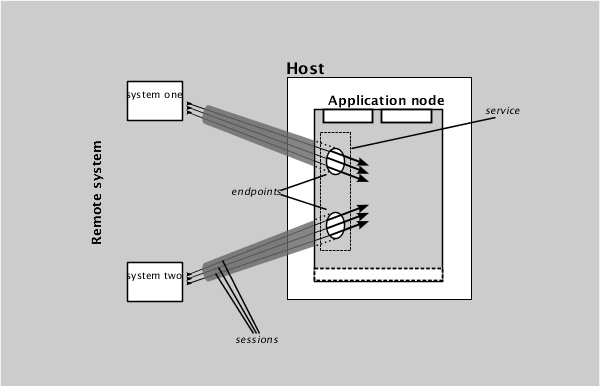TIBCO BusinessEvents® Extreme business solutions optionally communicate with external systems using these key connectivity features:
the channel framework, which provides connectivity between a node and external systems
a distributed communication model so that applications do not need to be concerned with nodes and their states
Each of these is configurable and controllable using the TIBCO BusinessEvents® Extreme management tools.
An TIBCO BusinessEvents® Extreme node communicates with external systems using the channel framework. This framework manages communications using the following constructs:
endpoint: this is an internal representation of a remote system; an endpoint also manages the creation and allocation of a number of sessions
service: a set of endpoints can be grouped into a service for administrative or operational purposes, for example so that they can be enabled and disabled as a unit
Figure Figure 2.10, “Connectivity of a business solution” depicts the relationship of service, endpoint, and session.
Within a node, an endpoint represents a logical destination that elements can communicate with, ignoring the intricate details of sessions and external system details. Importantly, the channel framework handles all data format and protocol conversion between the application and the external system.
An endpoint can manage either incoming (server) or outgoing (client) sessions.
Endpoints can also be set to generate trace events. This diagnostic facility records messages as they enter and exit the system; various filtering on these events can be configured.
Here are the main administrative control points of the channel framework:
you can display, start, and stop services, endpoints, and sessions
you can turn endpoint tracing on or off
